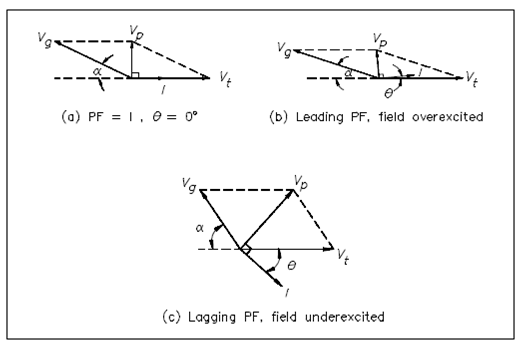Field Excitation:
For a constant load, the power factor of a synchronous motor could be varied from a leading value to a lagging value through adjusting the DC field excitation show in the figure. Field excitation could be adjusted so in which PF = 1 show in the next figure. Within a constant load on the motor, while the field excitation is increased, the counter EMF (VG) increases. The output is a change in phase among stator current (I) and terminal voltage (Vt), so in which the motor operates at a leading power factor. VP in Figure is the voltage drop in the stator winding's due to the impedance of the windings and is 90o out of phase along with the stator current. If we decrease field excitation then the motor will operate at a lagging power factor. Notice that torque angle α, also differ as field excitation is adjusted to modify power factor.

Figure: Synchronous Motor Field Excitation
Synchronous motors are used to accommodate huge loads and to improve the power factor of transformers in huge industrial complexes.